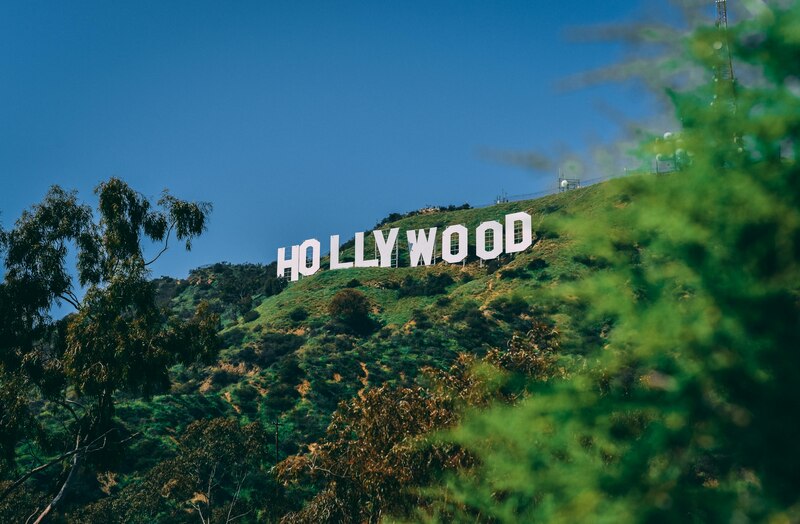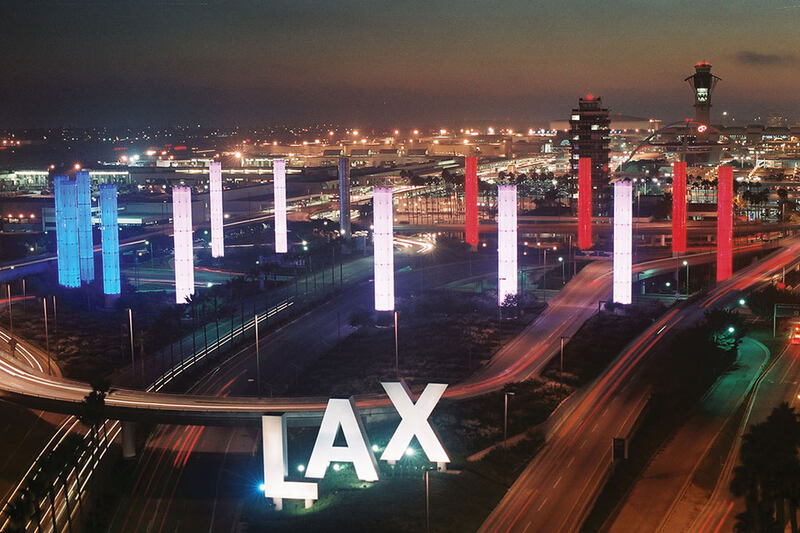Often called the "City of Angels," Los Angeles sprawls as a metropolis in Southern California. Brimming with cultural diversity, iconic landmarks, and an abundant history, LA testifies to the progress of urban life. In this article, we will take you through an exploration of this unique manifestation of the 20th century, a captivating journey through time and space within LA's enigmatic evolution.
1. Innovative Entertainment Hub
In the 20th century, Los Angeles cemented its status as the world's entertainment capital. Hollywood, a district synonymous with glamour and creativity, became the epicenter of global film production. Paramount and Warner Bros., among others, became the pillars shaping the film industry. The Hollywood Sign, perched on the hills, became an iconic symbol of the cinematic dream. The Walk of Fame emerged, immortalizing the footprints of legendary stars along Hollywood Boulevard, creating a pilgrimage for film enthusiasts worldwide.

However, Los Angeles isn't just about the glitz and glamour of the silver screen. Behind the scenes, the city's studio lots are buzzing with innovation. Technological advancements, from sound in the 1920s to digital effects in the late 20th century, revolutionized filmmaking. Studios continually pushed boundaries, adapting to the evolving tastes of audiences and experimenting with storytelling techniques. This continuous spirit of innovation solidified LA's reputation not just as an entertainment hub but as a driving force propelling the industry into the future.
- Caution: While Hollywood is a must-visit, be mindful of the occasional road closures for film shoots. Check schedules to navigate efficiently.
- Noteworthy: Explore smaller studios and independent cinemas for a taste of the diverse, avant-garde side of LA's film culture.
2. Architectural Time Capsules
Like pages in a history book, each building in Los Angeles reveals the city's architectural tapestry. It narrates a unique chapter of urban evolution. The majestic rise of Los Angeles City Hall symbolizes civic pride and stands as an iconic example of art deco architecture. Scattered across the city are Case Study Houses that embody mid-century modernism by experimenting with new materials and designs. Italian immigrant Simon Rodia constructed the Watts Towers, which stand as a testament to individual creativity and perseverance.
Architectural preservation efforts, operating beneath the surface, vitally maintain the city's historical charm. Organizations such as the Los Angeles Conservancy relentlessly protect and promote architectural gems' importance. By implementing adaptive reuse projects to breathe new life into historic structures. They ensure that our cityscape remains a dynamic reflection of its rich past.
- Consideration: Join guided architectural tours to gain in-depth insights into the stories behind the buildings.
- Fact: The Getty Center, an architectural marvel itself, offers panoramic views of the city and an impressive art collection.
3. Automobile Culture Phenomenon
In the 20th century, Los Angeles led the automobile revolution, symbolized by its extensive freeway system. The city's passion for cars found an icon in Mulholland Drive, a scenic road with captivating twists and turns that epitomized LA's love affair with automobiles. Reflecting LA's significant contribution to automotive culture, The Petersen Automotive Museum features a range from classic car displays to futuristic prototypes. It is an homage paid to the history of this industry.
The car-centric lifestyle, emanating from the glitz of Hollywood, exerted an influence on urban planning, and sprawling suburbs, and drive-in theaters emerged as direct outcomes. The city's streets, prominently featured in countless films, assumed a character of their own. They mirrored the open road's allure and freedom.
- Caution: Traffic congestion, especially during rush hours, is a common challenge. Plan travel times accordingly.
- Noteworthy: Visit the Nethercutt Collection for a glimpse into a world-class assortment of vintage and classic automobiles.
4. Aviation Marvels
The vast skies and ideal climate of Los Angeles propelled it to the forefront of aviation advancements in the 20th century. Aerospace giants like Lockheed Martin and Northrop Grumman set up shop, contributing significantly to the development of cutting-edge aircraft. The city's strategic location facilitated the growth of airports like Los Angeles International Airport (LAX), evolving into a global aviation hub.

Museums like the California Science Center's Air and Space Exhibits provide an immersive experience of the evolution of flight. From the iconic Spruce Goose to the Space Shuttle Endeavour, these exhibits showcase the technological leaps that define Los Angeles' aerospace prowess. Today, LAX remains one of the busiest airports globally, a testament to the city's enduring impact on air travel.
- Consideration: Check museum schedules for special events, flight simulations, or guided tours.
- Fact: The Douglas DC-3, a revolutionary aircraft, played a crucial role in shaping commercial aviation and can be explored at aviation museums in LA.
5. Cultural Mosaic Unleashed
Amidst the palm trees and sunshine, Los Angeles in the 20th century blossomed into a cultural melting pot. The Beat Generation found a haven here, with writers like Jack Kerouac and Allen Ginsberg leaving an indelible mark. Art galleries, such as the Los Angeles County Museum of Art (LACMA), embraced diverse artistic expressions, becoming bastions of creativity.
Musical legends were born in iconic music venues such as The Troubadour and The Roxy. The energetic beats of jazz, along with the rebellious spirit of rock 'n' roll continue to resonate within the cultural tapestry of our city. Modern-day canvases like the vibrant murals in the Arts District and graffiti-covered walls at Venice Beach thrive with cultural expression's enlivening spirit.
- Fact: The Getty Villa showcases classical antiquities in a setting inspired by ancient Roman architecture.
- Noteworthy: Explore neighborhoods like Echo Park and Silver Lake for a glimpse into the thriving indie music and arts scenes.
6. Environmental Oases
Contrary to its urban sprawl reputation, Los Angeles is a sanctuary of natural wonders. Griffith Observatory, perched on the slopes of Mount Hollywood, offers not only stunning views of the city but also astronomical insights. Runyon Canyon, nestled within the city limits, provides a hiking escape with panoramic vistas, creating a juxtaposition of urban and natural landscapes.
Not merely accidental green spaces, these environmental oases emerged as a result of conscious conservation efforts in the 20th century. The Mountains Recreation and Conservation Authority is an organization dedicated to their preservation and maintenance. It ensures accessibility for both locals who are residents deeply rooted within these areas as well as visitors seeking rejuvenation amidst nature's splendor.
- Consideration: Stay on designated trails to minimize environmental impact and respect the ecosystem.
- Noteworthy: Visit the Los Angeles County Arboretum and Botanic Garden to explore diverse plant collections across 127 acres.
Conclusion
In conclusion, Los Angeles, with its multifaceted identity, serves as a living testament to the 20th century. From cinematic marvels to architectural wonders, the city's manifestation of this era echoes in every corner. Embark on a journey through time as you explore the unique tapestry that makes Los Angeles a true embodiment of the 20th century.

Juliana Daniel Dec 31, 2023
Know About Federation Square, Melbourne: How To Reach, Best Time and Tips

Juliana Daniel May 19, 2024
Crafting Memories: Your Complete Guide to a Portugal Honeymoon

Juliana Daniel Oct 25, 2023
Make Your Time Memorable During One Day in Catalina Island Tour

Juliana Daniel Mar 11, 2024
Los Angeles in the 20th Century, Manifest – 6 Reasons

Juliana Daniel Mar 11, 2024
Beautiful Mountains in Brazil You Should Visit

Juliana Daniel Mar 11, 2024
Unveiling the Mystery of Actun Tunichil Muknal

Sean William May 19, 2024
"Egypt Travel Guide: Essential Tips for Making the Most of Your Trip

Juliana Daniel Nov 02, 2023